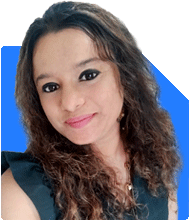I'm 27, want to retire at 45. Which SIP funds should I choose for the long term?
Ramalingam Kalirajan |10870 Answers |Ask -Follow
Mutual Funds, Financial Planning Expert - Answered on Feb 06, 2025
He has an MBA in finance from the University of Madras and is a certified financial planner.
He is the director and chief financial planner at Holistic Investment, a Chennai-based firm that offers financial planning and wealth management advice.... more

list of good sip funds for long term
Below are key aspects to consider while selecting SIPs:
Why Choose Actively Managed Funds?
Better Returns: Skilled fund managers aim to outperform the market.
Flexibility: Fund managers adjust portfolios based on market conditions.
Risk Management: Active monitoring helps reduce risks during market downturns.
Diversification: Investments spread across multiple sectors and companies.
Professional Expertise: Experts select stocks based on deep research.
Factors to Consider Before Investing in SIPs
Investment Goal: Define your financial objectives before choosing a fund.
Risk Appetite: Select funds based on your comfort with market fluctuations.
Time Horizon: Longer investment duration helps compound returns.
Fund Performance: Analyse consistency in past performance over 7-10 years.
Fund Manager’s Track Record: A strong manager improves the fund’s stability.
Expense Ratio: Lower costs help retain more returns.
Types of Actively Managed Funds for SIP
1. Large-Cap Funds
Invest in established companies with stable growth.
Lower risk than mid-cap or small-cap funds.
Suitable for conservative investors.
2. Flexi-Cap Funds
Invest across large, mid, and small-cap stocks.
Provide flexibility to adjust to market trends.
Ideal for long-term wealth creation.
3. Mid-Cap Funds
Invest in medium-sized companies with high growth potential.
More volatile but can give higher returns than large-cap funds.
Suitable for investors with a higher risk appetite.
4. Small-Cap Funds
Invest in emerging businesses with significant growth potential.
Higher risk, but can generate superior returns over the long term.
Requires patience and a long-term horizon.
5. Multi-Cap Funds
Diversified investment across large, mid, and small-cap stocks.
Balanced risk-reward ratio.
Suitable for investors seeking a blend of stability and growth.
6. Thematic or Sectoral Funds
Focus on specific industries like technology, pharma, or infrastructure.
High-risk, as performance depends on sectoral growth.
Best for investors with deep knowledge of specific industries.
How to Start SIP Investments?
Choose the Right Fund: Pick a fund aligned with your goals.
Decide SIP Amount: Start small and increase gradually.
Select Investment Duration: Stay invested for at least 7-10 years.
Monitor Performance: Review the fund’s progress periodically.
Remain Disciplined: Avoid stopping SIPs during market downturns.
Common Mistakes to Avoid in SIP Investment
Stopping SIPs During Market Corrections: Stay invested to benefit from rupee cost averaging.
Investing Without Research: Blindly choosing funds may impact returns.
Ignoring Asset Allocation: Balance investments across equity, debt, and gold.
Investing Based on Past Returns Alone: Future performance may differ from past trends.
Final Insights
Actively managed SIPs offer an excellent way to build wealth over time. Selecting the right funds based on personal goals and risk appetite is crucial. Staying invested for the long term ensures better compounding and stability.
Best Regards,
K. Ramalingam, MBA, CFP,
Chief Financial Planner,
www.holisticinvestment.in
https://www.youtube.com/@HolisticInvestment
You may like to see similar questions and answers below
Ramalingam Kalirajan |10870 Answers |Ask -Follow
Mutual Funds, Financial Planning Expert - Answered on Apr 22, 2023
Jinal Mehta | Answer |Ask -Follow
Financial Planner - Answered on Feb 10, 2024
Ramalingam Kalirajan |10870 Answers |Ask -Follow
Mutual Funds, Financial Planning Expert - Answered on Apr 23, 2024
Ramalingam Kalirajan |10870 Answers |Ask -Follow
Mutual Funds, Financial Planning Expert - Answered on Sep 22, 2024
Ramalingam Kalirajan |10870 Answers |Ask -Follow
Mutual Funds, Financial Planning Expert - Answered on Oct 03, 2024
Dr Dipankar Dutta |1837 Answers |Ask -Follow
Tech Careers and Skill Development Expert - Answered on Dec 05, 2025
Dr Shyam Jamalabad |108 Answers |Ask -Follow
Dentist - Answered on Dec 05, 2025
Dr Shyam Jamalabad |108 Answers |Ask -Follow
Dentist - Answered on Dec 05, 2025
Dr Shyam Jamalabad |108 Answers |Ask -Follow
Dentist - Answered on Dec 05, 2025
Dr Dipankar Dutta |1837 Answers |Ask -Follow
Tech Careers and Skill Development Expert - Answered on Dec 05, 2025
Ulhas Joshi |280 Answers |Ask -Follow
Mutual Fund Expert - Answered on Dec 05, 2025
Dr Dipankar Dutta |1837 Answers |Ask -Follow
Tech Careers and Skill Development Expert - Answered on Dec 04, 2025
Ravi Mittal |676 Answers |Ask -Follow
Dating, Relationships Expert - Answered on Dec 04, 2025
Anu Krishna |1745 Answers |Ask -Follow
Relationships Expert, Mind Coach - Answered on Dec 04, 2025
Anu Krishna |1745 Answers |Ask -Follow
Relationships Expert, Mind Coach - Answered on Dec 04, 2025



























